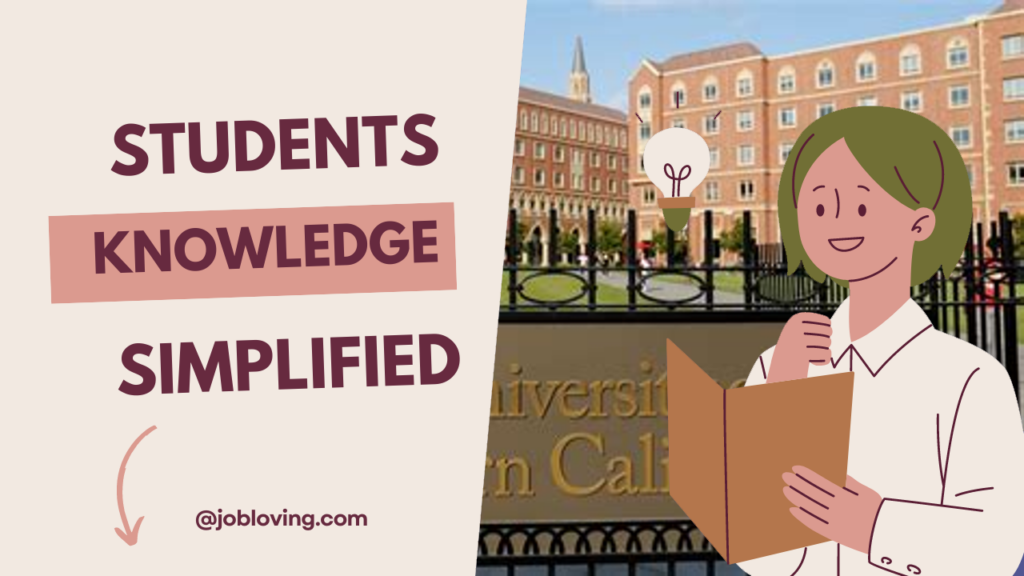Can you go to USC for free if you’re low-income? You bet! The University of Southern California (USC) is making strides in making education more accessible for students from low-income backgrounds. Almost two-thirds of USC undergraduates benefit from some form of financial aid, which can range from merit scholarships to need-based grants and low-interest loans.
Here’s the scoop: if you’re a first-year student hailing from a U.S. family that earns $80,000 or less annually, you could enjoy a tuition-free education at USC! This initiative is all about ensuring that a quality education is attainable for everyone, regardless of their financial background. In fact, during the 2022-2023 academic year, USC doled out a whopping $814 million in financial aid, with a significant portion—around 80%—coming in the form of grants and scholarships that don’t need to be paid back. That’s right! Free money!
But wait, there’s more! The average cost of attending USC for full-time undergraduates swings around $95,225 a year. With living expenses like housing and food hovering in the mix, it’s crucial for low-income students to manage their budgets wisely. Fortunately, assets like home ownership are excluded from financial need calculations, broadening the access to financial support for prospective Trojans!
USC’s financial aid program isn’t just limited to tuition. It pulls together a multitude of funding sources aimed at addressing the diverse financial needs of its student body. They even have an Affordability Initiative that gives hope to those who feel they’ve previously earned too much to qualify for assistance but still find college dauntingly expensive.
The university’s dedication doesn’t stop at funding; it’s about inclusivity and nurturing talent from all walks of life. Each year, over 4,000 students find their footing in higher education thanks to USC’s financial support, solidifying its position as one of the top institutions prioritizing the needs of low-income students. If you’re a prospective Trojan confused by financial aid lingo, don’t sweat it! USC encourages exploring various options that maximize the resources available to you.
So, for those dreaming of a USC education but worried about the cost, rest easy. With generous financial aid packages and supportive initiatives, it’s clear that USC puts its money where its mouth is, helping make higher education a reality for talented students from diverse backgrounds. Apply for aid, keep an eye on deadlines, and let that Trojan spirit shine!
How does USC’s financial aid program support low-income students beyond tuition coverage?
USC’s financial aid program offers a comprehensive approach that includes grants, scholarships, work-study opportunities, and low-interest loans. This multifaceted support helps low-income students manage not only tuition but also additional costs such as housing, food, and transportation, ensuring a more holistic financial assistance strategy.
What impact does USC’s tuition-free initiative for low-income students have on educational equity?
The tuition-free initiative for students from families earning $80,000 or less significantly enhances educational equity by removing financial barriers to access. This policy promotes inclusivity and allows talented individuals from diverse backgrounds to pursue higher education without the burden of tuition costs, aligning with USC’s commitment to fostering a diverse academic community.
How does USC ensure that its financial aid policies remain effective and responsive to student needs?
USC continuously evaluates and adjusts its financial aid policies to keep pace with rising tuition costs and changing economic conditions. By committing over $30 million annually to enhance support for low-income students and ensuring that need-based grant funding grows faster than tuition increases, USC demonstrates a proactive approach to addressing student financial needs.
What challenges do low-income students at USC face despite the financial aid available to them?
While USC covers 100% of tuition for eligible low-income students, these students often encounter significant living expenses, such as housing and food. Additionally, recent inconsistencies in financial aid policies have led to unexpected charges, highlighting the importance of clear communication and careful budgeting to navigate the financial landscape effectively.

